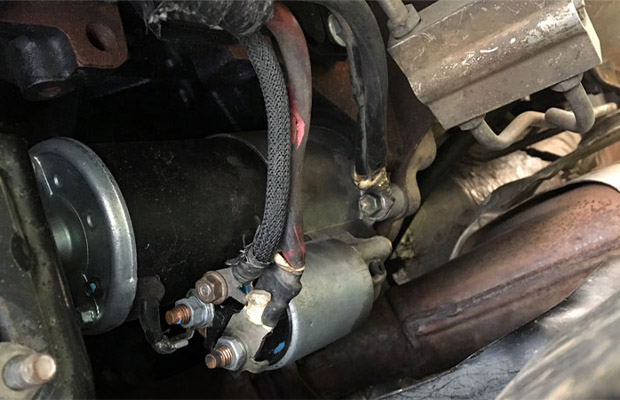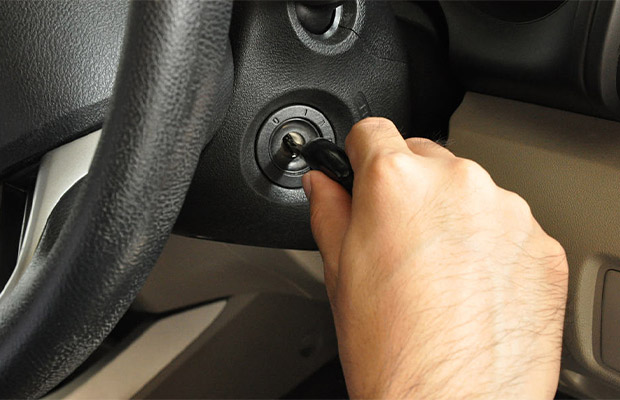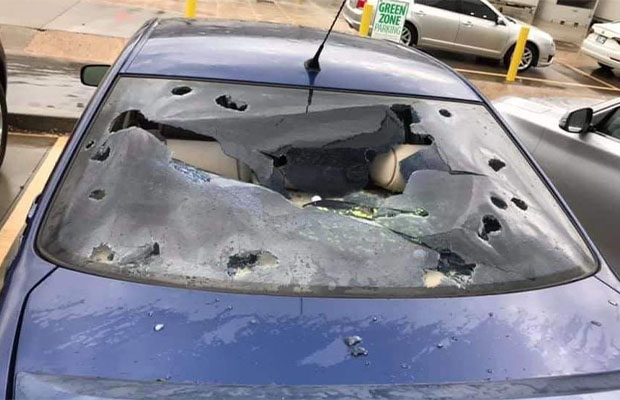Your starter is probably acting strangely. However, don’t worry—you can take action! As a car driver, knowing how to start a car with a bad starter is a handy skill to have.
When the car starts very easily with the kick starter, most car owners and drivers tend to ignore it—that is, until they try to start the car and the starter doesn’t work. Because starters are what power the engine, you cannot start the car when they malfunction because they are what convert electrical energy to mechanical energy.
We will introduce different methods to start a car with a bad starter. Additionally, we’ll let you know what issues to look for if your car still won’t start.
Problems of a Bad Starter
The reason we learned about the starter system before examining how to start a car with a bad starter is that if we are familiar with all the components and how a system functions, we can recognize the potential problems that each component/circuit may cause and can conduct a step-by-step analysis to diagnose the problem.
Having said that, a “Bad Starter” could refer to a fully discharged battery, faulty switches, relays, or solenoids, a blown fuse, a bad motor, damaged gears, or poor wiring (including ground wiring).
Here are some common problems associated with a bad starter motor:
- The Starter barely makes a turn.
- Very slowly, it rotates.
- Crankshaft does not turn, but starter motor does.
- Although the starter motor’s solenoid makes a “clicking” noise, it does not actually crank the engine.
These are merely a few potential issues with a bad starter motor. In a similar manner, a bad starter might indicate issues with additional parts.
10 Ways to Start a Car With a Bad Starter
1. Begin With Examining the Connections
If your car won’t start when you try to start it, you should check your connections. A loose battery terminal might not transmit enough connection to start the car. If you discover any loose connections, try tightening them with the proper tool and giving the car another go.
Make sure the connections to the starter motor’s battery positive are secure by checking and tightening the connections. After checking and tightening the connections, if you still have doubts, you should try jumpstarting the vehicle to avoid the battery-to-starter connection and see if the vehicle will start.
2. Examine the Engine Ground Connection
It is not the battery that powers the base cable that connects to the starter. The transmission that travels through the starter’s structure powers the base cable. However, the base cables for the ground are derived from those that link the transmission and car body.
Slow starting could be caused by any damage or deterioration to the ground cables. The starter’s reaching is managed by the cable, which accounts for this. To maintain the engine’s maximum capacity, the transmission cable and that of the transmission must be given immediate attention.
To solve this issue, run a jumper cable from the negative terminal through the taster’s construction. That is, if you’re absolutely certain that the ground connection is what’s preventing a good start.
3. Examine the Solenoid Cable of the Starter
The starter’s connection to the transmission’s ring gear is made only by the solenoid. An audible cranking noise indicates a defective solenoid even though it can also operate on the positive and ground connections.
Check the solenoid for dirt or rust if the starter seems to be uncontrollable when you kick it. Now, let reveal to you how to start a car with a bad starter solenoid, if this is the problem
Just cross the starter solenoid cord with a bypass cable. A small 12V cable should be connected directly from the battery to the junction where the starter and solenoid are connected. A click sound indicates the attachment is in place when you start your engine.
4. Tap the Starter
while this might sound odd to some motorists, tapping your starter motor with a hammer or any metal object will enable you to start your car. This is the most typical technique for starting a car with a bad starter. This also explains why this approach is usually taken first by drivers and mechanics.
Over time, the starter will begin to deteriorate and form dead spots between the field coil and the amateur. Therefore, turning on the starter will make it spin long enough to transform electrical energy into mechanical energy. Even so, there’s a chance that this approach won’t work in modern vehicles with concealed starters.
5. Check for Corrosion
Corrosion, which puts the engine’s electrical conductivity in danger, may be the cause of cable failure. For this reason, it is wise to check for any acidic drops that could cause corrosion. This means that prompt preventive measures are necessary in order to effectively address the problem.

Wash the terminal head with the mixture after mixing water and sodium bicarbonate in a small bowl. Prior to rinsing the terminals and connectors with sterile hot water, clean for a brief period of time. In doing so, it means you should wash out the engine box as well as look for any dirt or corrosive deposits there.
The engine’s ground cable, positive connecting cable, and solenoid connector should all be checked over and cleaned.
This guide will go over how to wash a car at home and some frequently asked questions about best practices for washing cars in order to assist you in keeping your car clean.
6. Jump Start the Car
Having a jump starter is great, but you can’t jump start a car with a bad starter. Jumpstarting the car might be the temporary fix, but it might work. When your battery is operating at its peak, it will supply the starter with enough amps to allow your car to start.
Just give it a shot; you never know what could happen. Jumpstarting can activate the amateur’s dead spots and produce enough energy to rotate with a jump starter or a strong battery.
7. Push the Car to Start
Push-starting a car is another simple but effective old-school method of managing a problematic starter. Even with a dead battery and a damaged starter, pushing starts the car. The only restriction on push-starting is that it only functions in automobiles with manual transmissions.
While you are inside the car turning the key, position some strong bodies behind it to push forward. Additionally, before releasing the clutch, you should put the car in motion and instruct the drivers to exert force at a minimum speed of 10 mph. The engine would gain power and start running as soon as the release was made. If the first attempt fails, try again.
8. Examine the Flywheel of the Engine
Check the engine’s flywheel because a problematic start may also result from this. The large wheel between the engine and transmission is referred to as the engine flywheel. The starter gear fastens to the flywheel and wants to start the engine. For this reason, when you remove the starter motor, leave the car’s transmission in neutral.
Turn the crankshaft’s center bolt with a ratchet or breaker bar to get someone to spin the crankshaft for you. The front engine’s underside is where you can find the crankshaft pulley. Numerous auto parts, including the alternator and the steering pump, are under the control of this pulley rotation. The center bolt of the pulley must be obtained by removing the wheel.
9. Test Run the Starter Motor
After inspecting the starter motor and making the required repairs, you should test-drive in an auto repair shop. For the test run, some of these stores don’t charge anything. If the starter motor exhibits certain characteristics, you’ll know it’s old.
An old starter motor will have characteristics like a haggard shaft, amateurish brushes, sluggish or no cranking, and poor current transmission. In order to determine whether the starter motor needs to be replaced, a test run is required.
10. Softly Thump the Starter With a Hammer
Thumping the starter lightly with a hammer is one of the most widely used techniques for providing a quick fix. For it to function effectively, it is advised that you do it while simultaneously starting the car. The starters begin to form inactive spots between the field coils and amateur, which is why this strategy succeeds. So, by tapping it, the armature is given life and begins to rotate.
Although this strategy has been successful over the years, new cars now have transversal engines in place of the typical longitudinal engine. As a result, the thumping trick won’t be effective because the starter is placed in a challenging-to-reach location. Try using a lighter tool if your car has this problem.
Also Read:
FAQs
Can I Jumpstart a Car That Has a Bad Starter?
While you can jump start a car with a bad starter, doing so will not fix the underlying issue. Your car’s battery, not the starter, will benefit from a jump start.
How Do You Bypass a Starter?
In bypass starting, you touch a wrench or a screwdriver to the terminals of the starter motor, to the solenoid of a tractor, or to other equipment. All tractor-neutral starting switches are disregarded by doing this. As the circuit is finished, the starter engages, and the engine starts, sparks fly and electricity snaps.
Wrap Up
It’s possible that poor battery care or damaged electrical connections are to blame for your car’s bad starter.
When there is a need for urgency, a poor starter is a pain in the neck because it catches you off guard. The best course of action, however, is to have a qualified mechanic examine it. Without consulting a professional, there are still a number of ways to get your car back on the road.
Whichever the case may be, the advice above will be very helpful to you if you need to know how to start a car with a bad starter. With the tips here, you can surmount any of the car start challenges.
Read More: How to Remove Tint from Car Windows?





